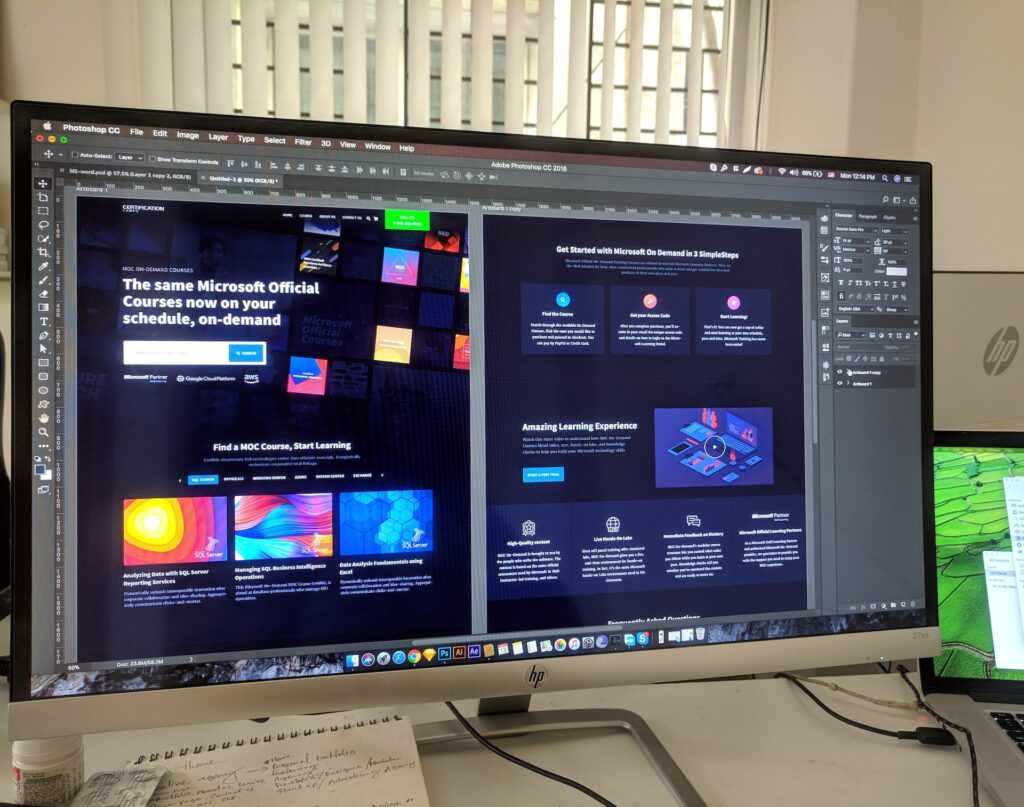Creating an effective web design for a small business in St. Louis, or anywhere else, requires a strategic approach that aligns with your business goals, caters to your target audience, and reflects your brand identity. Here are some web design strategies tailored for small businesses in St. Louis:
Mobile-First Design: With the majority of web traffic coming from mobile devices, it’s essential to design your website with mobile users in mind. Ensure that your website is responsive, meaning it adapts seamlessly to different screen sizes. This approach is not only user-friendly but also boosts your search engine rankings, as Google prioritizes mobile-friendly sites.

Local SEO Optimization: St. Louis is a city with a strong local market. Make sure your website is optimized for local SEO. Include location-based keywords, create a Google My Business profile, and ensure that your NAP (Name, Address, Phone number) information is consistent across the web. Encourage customer reviews on platforms like Google and Yelp to improve local search visibility.
Clear and Concise Messaging: Your website should communicate your value proposition and offerings clearly and concisely. Use compelling headlines, bullet points, and easy-to-read fonts to ensure that visitors quickly understand what your business is about and how it can benefit them.
High-Quality Visuals: Invest in professional photography and graphics. High-quality visuals not only enhance the aesthetics of your website but also build trust with your audience. Use images that showcase your products, services, and team.
User-Friendly Navigation: Keep your website’s navigation simple and intuitive. Use clear menu structures and labels to help visitors find what they’re looking for easily. A well-organized website reduces bounce rates and keeps visitors engaged.
Contact Information Prominence: Ensure that your contact information, including your phone number and address, is prominently displayed on your website. This makes it easy for potential customers to get in touch with you.
Social Media Integration: Link your website to your social media profiles, and vice versa. Social media can be a powerful tool for small businesses in St. Louis to engage with the local community. Share updates, promotions, and customer testimonials.
Content Strategy: Develop a content strategy that includes a blog. Regularly publishing high-quality, relevant content not only provides value to your audience but also improves your website’s SEO. Consider creating content that addresses local topics, events, and news.
Security Measures: Security is crucial for your website and your customers’ data. Invest in an SSL certificate to encrypt data transmission and protect your site from cyber threats. Display trust badges to reassure visitors about the safety of their information.
Performance Optimization: Ensure that your website loads quickly. Slow-loading pages can deter visitors. Compress images, minimize code, and use content delivery networks (CDNs) to improve load times.
CTA (Call to Action) Buttons: Use compelling CTAs strategically placed throughout your website. Encourage visitors to take action, whether it’s signing up for a newsletter, requesting a quote, or making a purchase.
Analytics and Tracking: Implement web analytics tools like Google Analytics to monitor your website’s performance. Analyze visitor behavior to make data-driven decisions for ongoing improvements.
Local Partnerships and Networking: Consider partnering with local businesses and organizations. Cross-promotion and backlinks from reputable local sources can boost your website’s authority and local search rankings.
Accessibility: Ensure your website is accessible to everyone, including people with disabilities. This not only broadens your audience but also demonstrates your commitment to inclusivity.
Regular Updates: Keep your website content and design up-to-date. Outdated information can harm your credibility. Regularly update your website with fresh content, and review its design for any necessary improvements.
Feedback and Testing: Solicit feedback from customers and colleagues, and conduct usability testing to identify areas for improvement. Testing can reveal issues that may not be immediately apparent to you.
Budget Considerations: Small businesses often have limited budgets. Prioritize the most critical aspects of web design and consider phased development if necessary. Allocate resources strategically.
By implementing these web design strategies, small businesses in St. Louis can create an effective online presence that attracts local customers, builds trust, and supports business growth in the digital age. Remember that web design is an ongoing process, and it’s essential to regularly assess and update your website to meet changing business needs and evolving user expectations.
